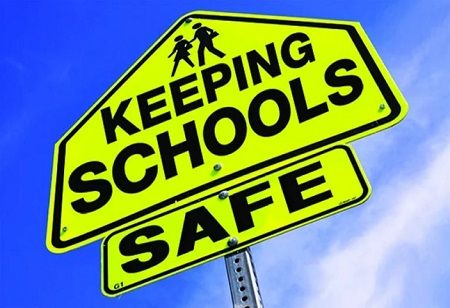-
The safety of students is one of the factors in the current education system since it affects the students. Schools are one of the most significant and valuable institutions in society, and children and adolescents spend much time in this stage of their development, so they require protection. School safety policies are essential since they assist in the formulation of a safe environment within which the learning and development of the students can take place. Thus, schools can greatly decrease the risks and establish a proper environment for learning by identifying possible dangers and applying preventive measures. Such policies not only assist in preventing physical dangers but also assist in maintaining a safe and healthy emotional and psychological state of the learners, making education and their overall well-being better.
The Importance of School Safety for Student Well-being
School safety is essential for the all-round development of students because where children are safe, they can be assured of their safety hence they concentrate on their studies. In cases where schools ensure that they develop sound safety policies then the rate of violence, bullying, and other vices are minimized and students are provided with a safe environment in which they can learn. This feeling of safety not only contributes to the student’s psychological and emotional state but also to their academic and social achievements. Thus, the absence of distractions and potential threats in school ensures that every learner is able to achieve his or her potential to the fullest, thereby underlining the significance of safety measures in the educational process.
Impact of Physical Safety Measures on Student Well-being
Measures of physical security are very important to prevent the students from any form of harm and to ensure that the environment is safe for learning. The presence of security cameras, restricted entry to the school compound, the practice of safety drills, and security personnel presence greatly reduce the students’ insecurity. When students are secure, they will be willing to participate in the class activities and other co-curricular activities hence making their school experience a positive one. It not only helps them to excel academically but also fosters positive interactions with peers and teachers, which is a positive aspect of their development. In this way, schools meet the students’ basic physical safety needs and establish the conditions that contribute to the child’s academic success and social well-being.
Essential Role of Cybersecurity in Safeguarding Students
Internet security is one of the largest aspects of school safety since the students are vulnerable to cyberbullying, online predators, and other materials that are not safe for the students. Measures like filtered internet connection, software installation and monitoring, and detailed programs on cyber security are crucial when it comes to the protection of students. Teaching students about proper usage of the internet and also offering assistance to those who are affected by cyber events are some ways of promoting safe use of the internet. For instance, in Singapore, the Ministry of Education has adopted strict cybersecurity measures in schools, which include the inclusion of digital safety programs in schools and monitoring of the internet to curb cyber threats hence protecting the students’ safety and improving their overall welfare.
The Role of Teachers and Staff in Enforcing Safety Policies
School staffs are the key actors in the management and particularly in the enforcement of the school safety policies. They play an important role in observing students’ behavior and signs of danger and provide necessary assistance to prevent any insecurity in school. Professional development also provides the educators with knowledge on how to handle safety issues and how to manage any form of calamity. Also, positive relationships with students are established by teachers, which enables them to encourage the students to come forward and express themselves. It assists in the early detection of problems and makes students feel that they are valued and their complaints are going to be addressed, hence promoting a safer and more secure school environment.
Parental Involvement and Community Support in School Safety
The involvement of parents and support from the community play a major role in the implementation of the measures of school safety. Involving parents in the safety committees and attending workshops ensures everyone is on the same page in ensuring that the school remains safe. This effort is supported by the community as it helps to establish cooperation with local police departments and mental health agencies, which in turn increases the amount of resources at the disposal of schools. When parents and the community are involved, they supplement the support system that a child gets in school, and this is a plus for the child since several layers of protection shield him. This approach of unifying the efforts makes it possible to guarantee a high level of safety measures implementation and to provide the students with a single and consolidated network of support and safety.
Conclusion: Maintaining safety while at the same time ensuring that the school climate is friendly is not easy but crucial. Implementing safety policies that will adequately cover the lives of students while at the same time creating a welcoming environment is very important. Ensuring that students’ physical safety, their devices and data, and their mental well-being are all safeguarded, schools can foster environments that protect students and empower them to succeed. The participation of teachers, staff, parents, and the community in these programs makes it easy to achieve school safety because everyone is involved and will benefit from a safe learning environment. Such a broad-spectrum approach not only shields the students but also creates a healthy and empowering culture that paves the way for the students’ growth and achievement.
🍪 Do you like Cookies?
We use cookies to ensure you get the best experience on our website. Read more...

